A head gasket is vital to an engine's combustion system. The gasket helps the engine obtain the right compression to maintain power. If you are installing one, you should know which side faces up. Read this post to learn which way to install a head gasket based on our research.
The side of the head gasket that should face up will often be stamped UP or TOP. You should install it facing the top of the engine block.
Most gaskets only go one way, and the direction matters. If you install it backward, the gasket cannot carry out its function. If that happens, the coolant temperature will rise, and the car may overheat.
Non-directional gaskets with no indicators of which side is up are also available. The direction won't matter with this type of gasket. In addition to being positioned properly, the gasket needs sealing. Continue reading to understand why it is important to install a head gasket correctly.
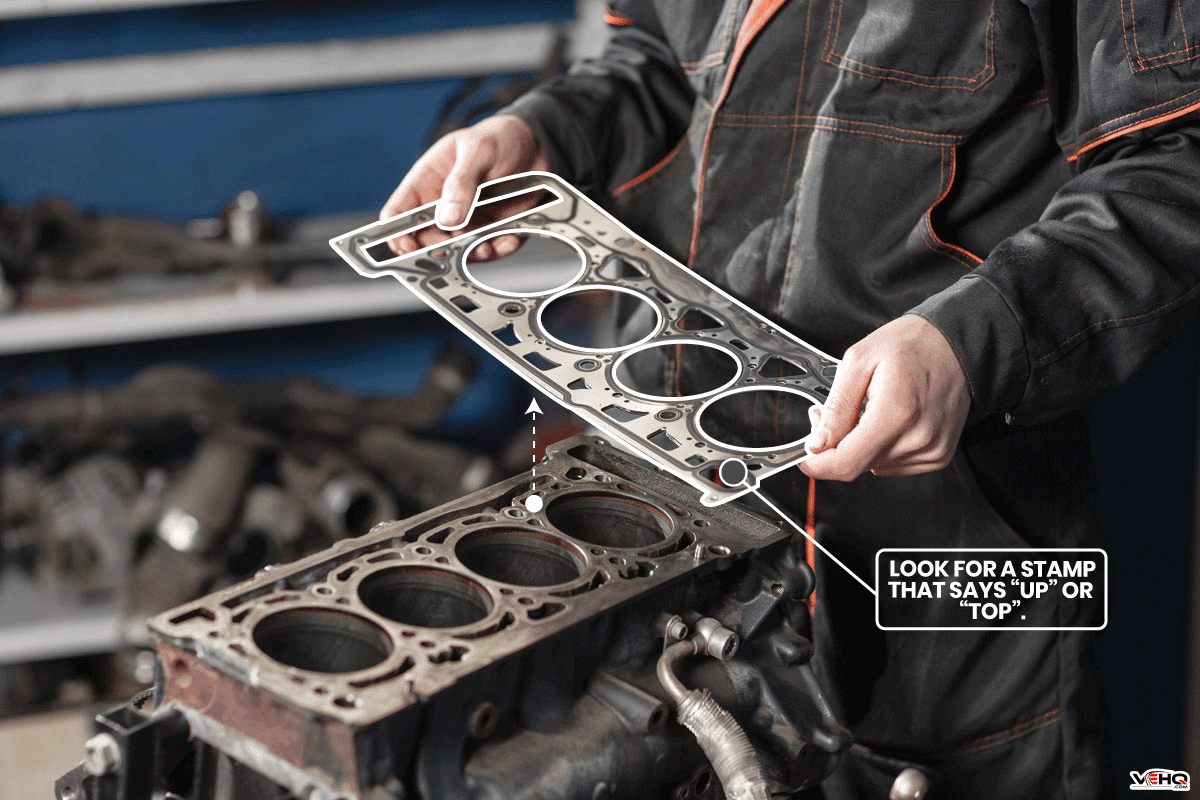
Which Side Of The Head Gasket Faces Up?
You will find the head gasket between the engine block and cylinder. Its function is to seal both surfaces.
The gasket seals the oil from the engine combustion chamber while keeping the right engine compression. After some time, the head gasket can blow up, and you will need to replace it.
Your vehicle will work properly if you install the head gasket correctly. The head gasket will likely be marked to indicate how it should be positioned. You should follow the marking to avoid engine problems.
Head gaskets will often be stamped UP, TOP, or THIS SIDE UP, which means that side should face toward the top of the engine block.
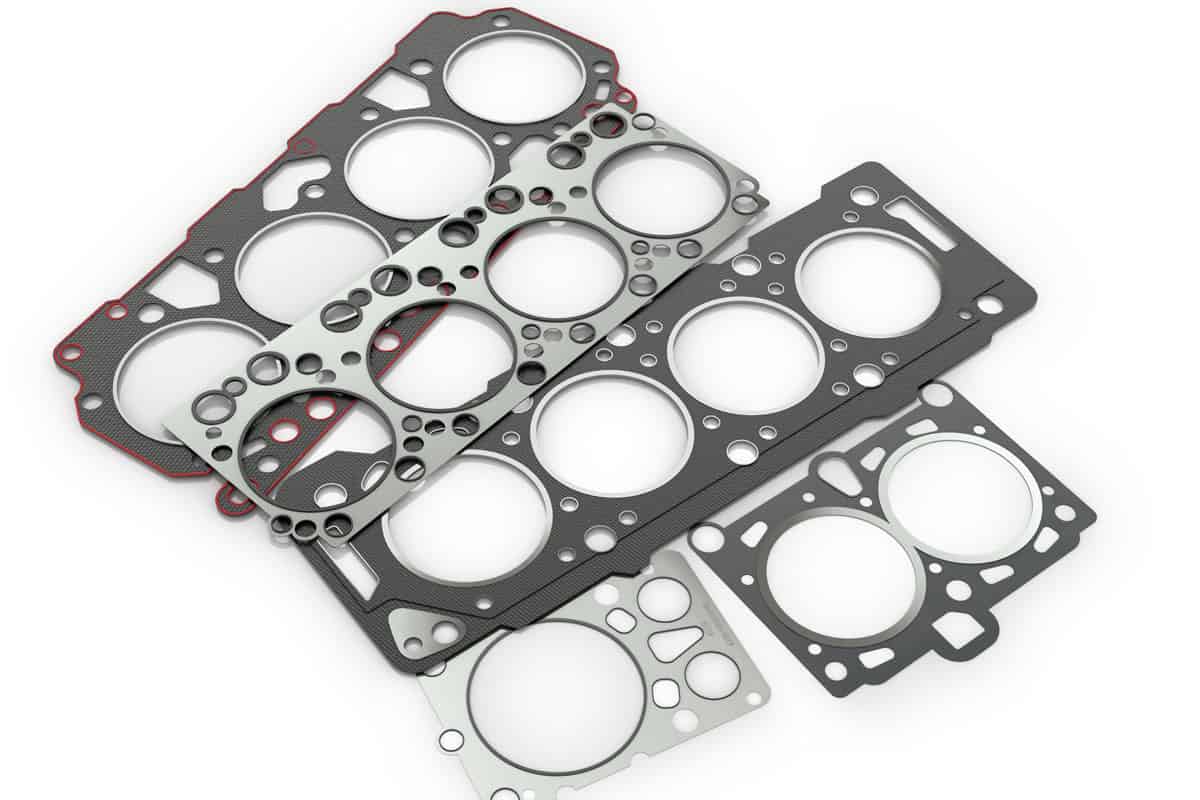
Yet, some gaskets do not have indicators. These types of gaskets have a blue coating, and you can install them in any direction.
You should be able to install the head gasket yourself. If you feel unsure, you can ask for help from a certified mechanic. Incorrect installation will cause problems with the engine.
What Happens If You Install A Head Gasket Backward?
Installing the head gasket backward is a driving hazard. You will not have a safe ride if the installation is wrong. You will know you installed the gasket incorrectly because problems will develop.
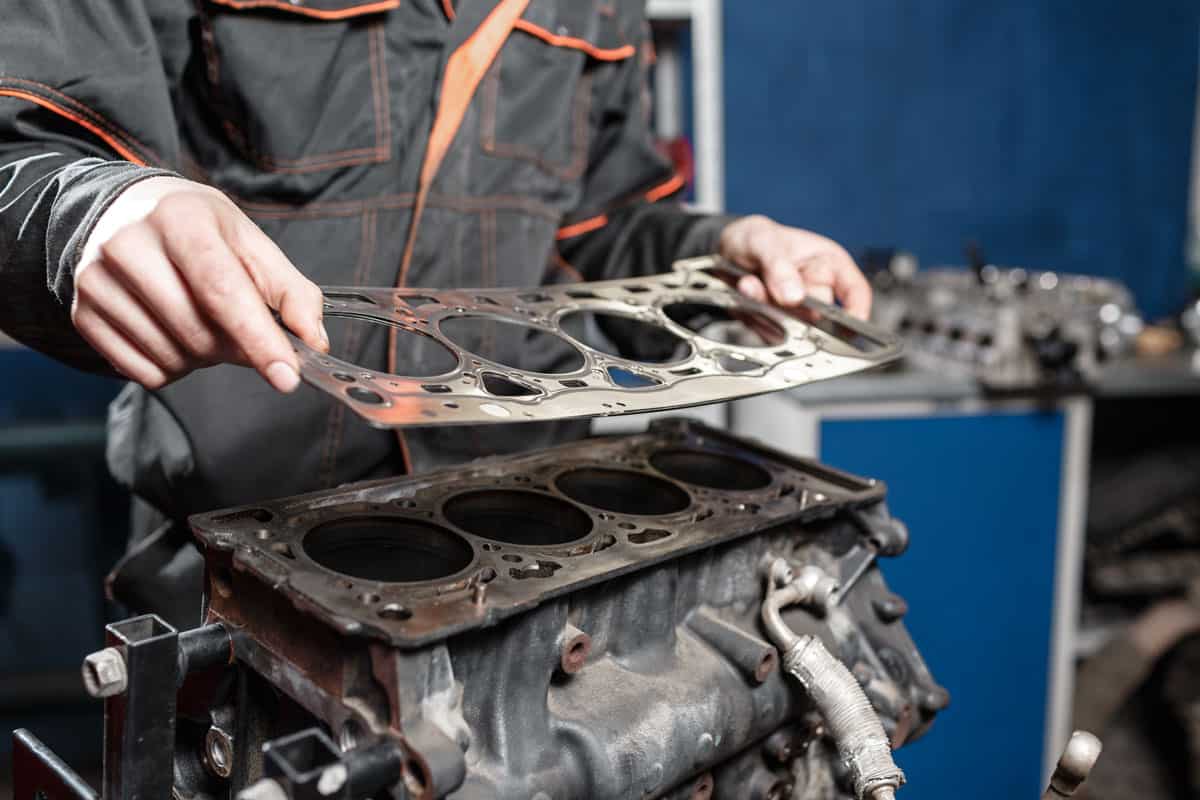
If the head gasket has markings and you installed it in the wrong direction, you will encounter issues such as:
- Blown gasket
- Coolant leaking
- Engine overheating (due to blocked cooling passage)
- Excessive cylinder pressure causing detonation (damage from inside out)
- Gasket coating sticking on the wrong side
- Loss of engine compression
- Mixed oil and coolant (milky color)
- Poor circulation of air and fuel
- Problems with vehicle's temperature
- White smoke coming from the hood
In short, your engine will not work. The listed problems can be detrimental to your car. If you see any of these symptoms, you should act immediately to solve the issues. You should not drive the car if it has any of these problems.
Meanwhile, if your gasket does not have markings on either side or has a blue-striped coating, there will be no issues. Just make sure that you seal the gasket tightly so that it can do its job.
Why It's Important To Position The Head Gasket Properly
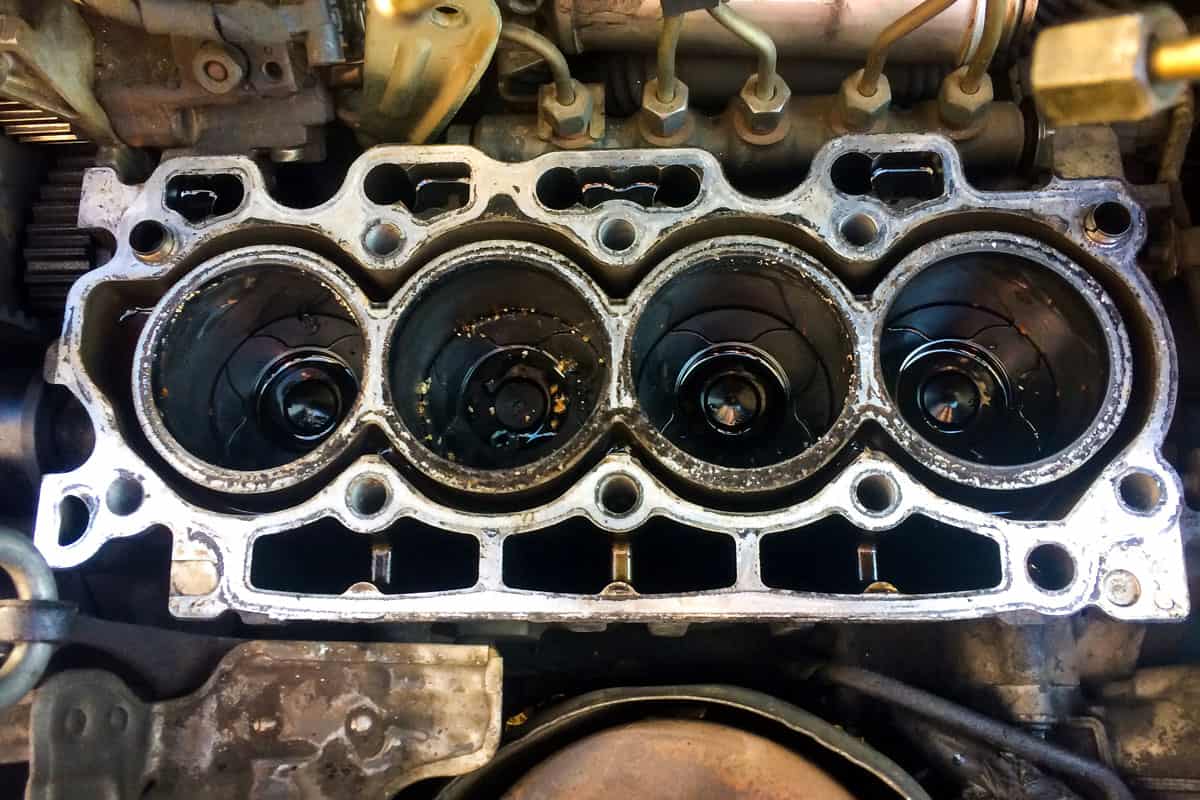
If the head gasket is directional, you must install it the right way. The correct placement will allow for the proper circulation of heat and coolant in the engine.
The correct direction matters because there are specific bolts and ports that require the perfect fit and alignment. You will notice that both sides of the gasket are identical, and the marking where you should face it up is the point of reference.
Also, the special coating of the gasket aids in its removal and engine performance. The anti-stick feature will be present on one side. Other gaskets may have a pressure-sensitive adhesive.
If you installed the gasket in the wrong direction, the issues will show.
What To Do When The Head Gasket Is Facing The Wrong Side
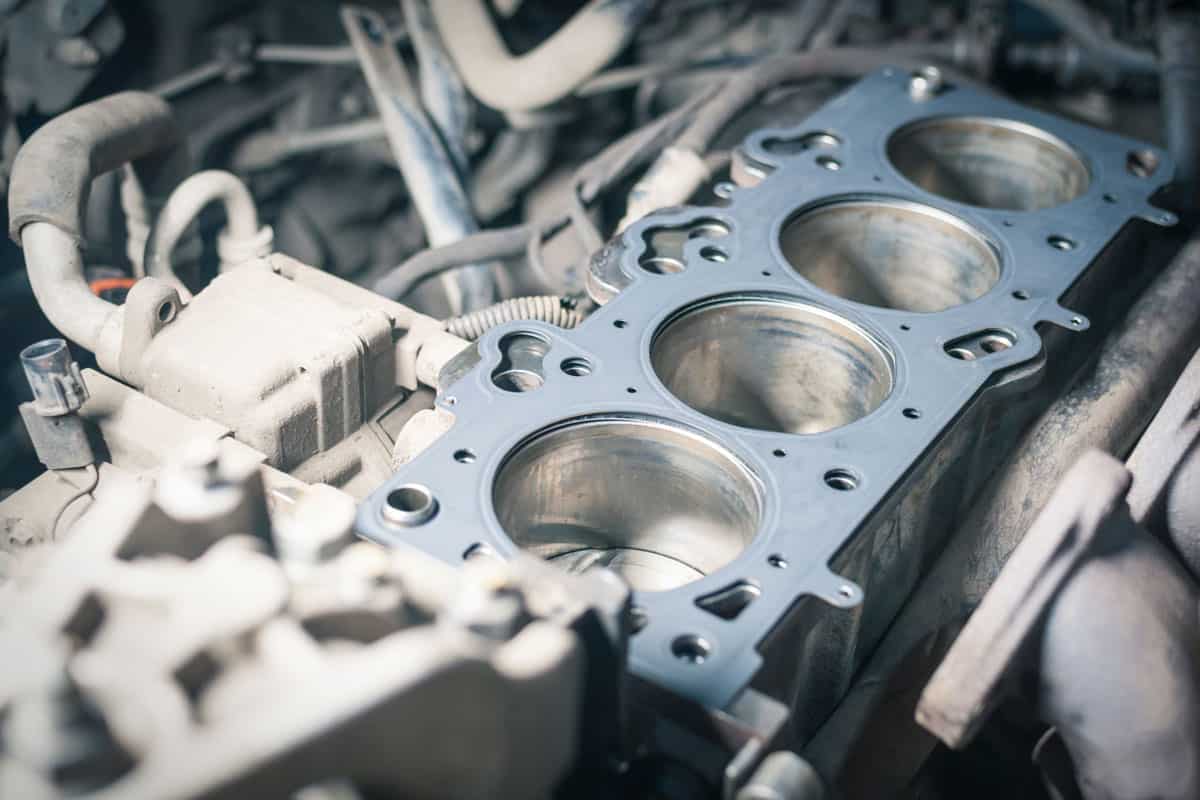
If the head gasket is facing the wrong side and you aren't driving your vehicle, don't worry. You can reposition the gasket before driving. If you experience issues after this, there may be problems with the joints or the gasket material.
Consult a trusted mechanic for help with troubleshooting the head gasket placement.
If you realize that the head gasket is facing the wrong direction while you're driving, you should immediately return home or go to a car shop. If you continue driving, your engine will suffer the consequences.
When the symptoms of gasket failure are evident, you should repair or replace the head gasket with a new one.
Should You Repair Or Replace A Broken Head Gasket?
You have two options for fixing a head gasket. Find out more below.
Repair
It is possible to repair a damaged head gasket, including small leaks. There are repair solutions that won't cost too much and are do-it-yourself. You can use a chemical sealant to fix a head gasket, and you won't have to dissemble the engine.
Click here to get this head gasket sealant on Amazon.
Follow the instructions of the product for the correct application. The product is safe to use with any coolant.
However, the solution is only temporary. Your car will probably run for 15-20 minutes without overheating. If you use the vehicle for more than 20 minutes, draining the coolant is necessary.
For more information, check out this post: How To Fix A Blown Head Gasket Without Replacing It [Step By Step Guide].
You should try to detect leaks while they're small. If the leaks are irreparable, replacement is the better option.
Replace
Replacing the head gasket is a long-term solution. Most experts recommend this option because it is more cost-effective than repairing.
Replacing the head gasket takes time. You must carefully remove parts and prepare the surface prior to installation.
Below are the signs that you need a head gasket replacement:
- Fluid loss (coolant or oil) on the side of the block
- Leaking of coolant into oil ports
- Loss of compression and power
Once you decide to replace it, here are some things to consider:
- With various head gaskets available, you must choose a material that is reliable and with appropriate thickness. Graphite is a good option.
- If the original head gasket has a multi-layer steel construction, you need to smooth out the surface. In that case, you will incur extra costs.
It is important to replace a faulty head gasket to avoid overheating and irreversible damage.
Click here to see this head gasket on Amazon.
How Much Does Head Gasket Replacement Cost?
You will spend $200 to $400 for the head gasket if you buy a part made by the original manufacturer. Aftermarket gaskets range from $50 to $100.
Universal head gaskets will cost $50 or less. It is up to you to choose the part for the best performance of the vehicle.
Replacing the head gasket will take eight to 12 hours. You can replace the head gasket on your own. If you hire a professional, you may pay an hourly rate of around $15 to $210. Other rates will include shop/garage and machining fees, if applicable.
Costs will vary if there are complicating factors during replacement.
After replacing the head gasket, you should check to make sure there are no other problems. Find out more here: Most Common Problems After Head Gasket Replacement – What To Look For?
Why Is Sealing A Head Gasket Important?
After the repair or replacement, you must seal the head gasket. Sealing helps the head gasket perform its functions. Also, the sealant can help extend the life of the head gasket.
Click here to check out this sealant on Amazon.
In Summary
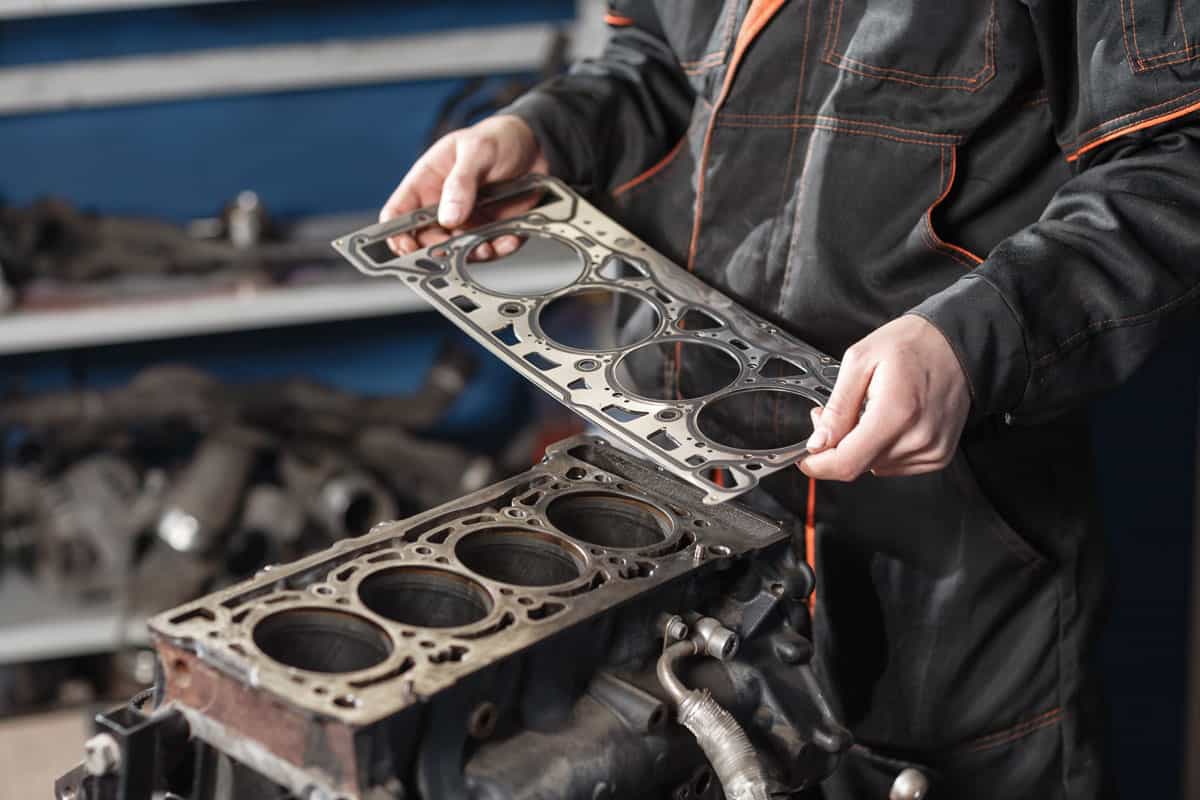
A head gasket is an integral part of your car. It seals the space between the cylinder and the engine block.
Most head gaskets are directional, and you should install them correctly. You must place the gasket facing up if it marked UP, THIS SIDE UP, or TOP. If there are no markings, you can face the gasket on either side.
If you do not install the gasket in the right direction, your engine will encounter problems. You'll need to reverse the placement before you can use your car.
If there are small leaks, you can repair the head gasket. However, if the damage is irreparable, replacement is the best option.
You can enjoy a safe ride if you have the head gasket facing in the right direction.



